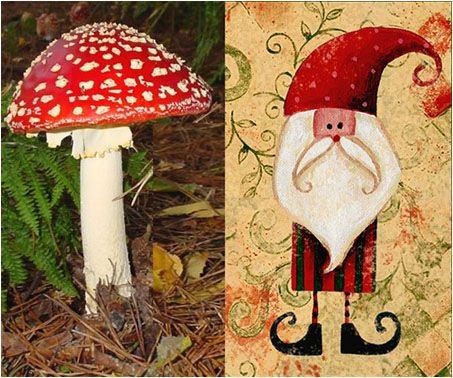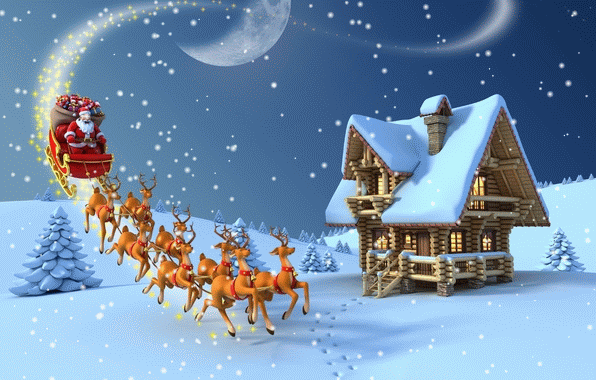
Originally, the figure of Santa Claus came from the Nordic countries. In this region, Arctic shamans used to dole out psychedelic mushrooms as part of their winter solstice celebrations. They dressed in red clothing with white spots, similar to Amanita mushrooms. People enjoyed a magical experience and communed with nature on the night of the solstice. Just like Santa enters homes through the chimney, Arctic shamans typically entered snow-blocked homes through an opening in the roof. Nordic shamans had a deep connection with reindeer as well. They were generally recognized as the spirit animals for the shamans. Under the influence of magic mushrooms, it’s easy to see how someone could hallucinate flying reindeer beneath a beautiful night sky in December.
There’s another interesting connection between mushrooms and the tradition of gift-giving at Christmastime. Most people put up an evergreen tree inside their homes to mark the holiday. Gifts are wrapped and placed underneath the tree. Mushrooms also tend to grow at the base of trees, where decaying organic matter can feed the fungi. It’s more than a coincidence that people leave red and white presents underneath their pine trees on Christmas.
Sacred to these people was the red and white mushroom Amanita muscaria, also known as fly agaric. Commonly seen in books of fairy tales in association with magic and fairies, this mushroom contains potent hallucinogenic compounds once used by ancient peoples for insight and transcendental experiences. Major elements of the modern Christmas celebration—Santa Claus, Christmas trees, magical reindeer and the giving of gifts—are based upon traditions surrounding the harvest and consumption of this most sacred mushroom.
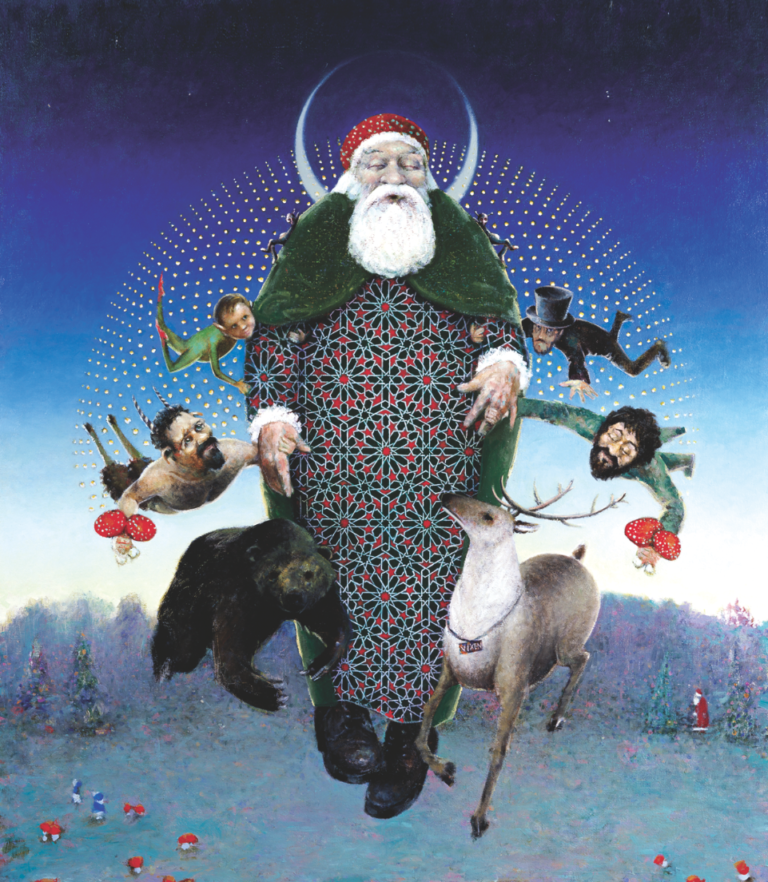
The world tree
Ancient peoples, including the Lapps of modern-day Finland and the Koyak tribes of the central Russian steppes, believed in the idea of a world tree. The world tree was seen as a kind of cosmic axis onto which the planes of the universe are fixed. The roots of the world tree stretch down into the underworld, its trunk is the “middle earth” of everyday existence, and its branches reach upward into the heavenly realm.
Amanita muscaria grows only under certain types of trees, mostly birch and evergreens. The cap of the mushroom is the fruit of the larger mycelium beneath the soil which exists in a symbiotic relationship with the roots of the tree. To ancient people, this mushroom was literally “the fruit of the tree.”
The North Star was also considered sacred, since all other stars in the sky revolved around its fixed point. They associated this “pole star” with the world tree and the central axis of the universe. The top of the world tree touched the North Star. The spirit of the shaman would climb the metaphorical tree, thereby passing into the realm of the gods—hence, the star on top of the modern Christmas tree, and also the reason that the super-shaman Santa makes his home at the North Pole.

Reindeer games
The active ingredients of A. muscaria are not metabolized by the body, and so they remain active in the urine. In fact, it is safer to drink the urine of one who has consumed the mushroom than to eat the mushroom directly, as many of the toxic compounds are processed and eliminated on the first pass through the body.
It was common practice among ancient people to recycle the potent effects of the mushroom by drinking each other’s urine. The mushroom’s ingredients can remain potent even after six passes through the human body. It may seem odd to us now, but this urine-drinking activity preceded alcohol by thousands of years.
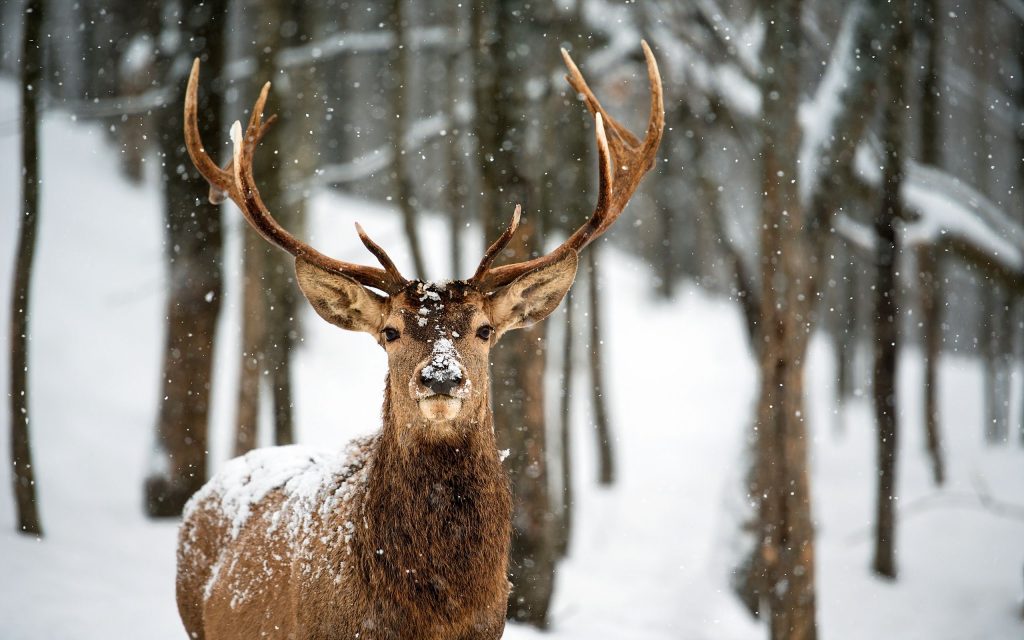
Reindeer were the sacred animals of these semi-nomadic people, since they provided food, shelter, clothing and other necessities. Reindeer are also fond of eating the mushroom; they will seek it out, then prance about while under its influence. Often the urine of tripped-out reindeer would be consumed for its psychedelic effects.
This effect goes the other way too, as reindeer also enjoy the urine of a human, especially one who has consumed the mushroom. In fact, reindeer will seek out human urine to drink, and some tribesmen carry sealskin containers of their own collected piss, which they use to attract stray reindeer back into the herd.
Santa Claus, super shaman
The effects of A. muscaria usually include sensations of size distortion and flying. Legends of shamanic journeys include stories of winged reindeer transporting their riders up to the highest branches of the world tree.
Although the modern image of Santa Claus was created at least in part by the advertising department of Coca-Cola, in truth his appearance, clothing, mannerisms and companions all mark him as the reincarnation of these ancient mushroom-gathering shamans.
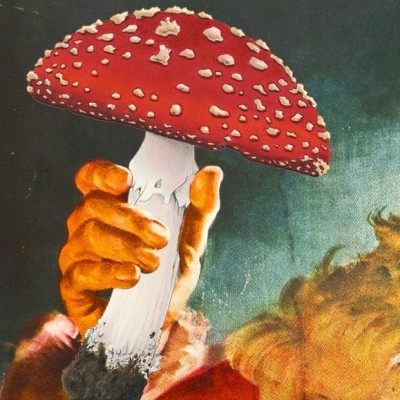
When it was time to go out and harvest the magical mushroom, the ancient shamans wore red and white fur-trimmed coats and long black boots. After gathering the mushroom from under the sacred trees where they appeared, the shamans would fill their sacks and return home. Climbing down the chimney-entrances of their yurt homes, they would share the mushroom’s gifts with those within.
The mushroom needs to be dried before being consumed; the drying process reduces the mushroom’s toxicity while increasing its potency. The ancient ones strung the mushrooms they gathered and hung them to dry by the hearth fire—an echo of the modern stringing of popcorn and other items?
The psychedelic journeys taken under the influence of a. muscaria were also symbolized by a stick reaching up through the smoke-hole in the top of the yurt. The smoke-hole was the portal where the spirit of the shaman exited the physical plane.
Santa’s famous magical journey, where his sleigh takes him around the whole planet in a single night, is developed from the “heavenly chariot,” used by the gods from whom Santa and other shamanic figures are descended. The chariot of Odin, Thor and even the Egyptian god Osiris is now known as the Big Dipper, which circles around the North Star in a 24-hour period.
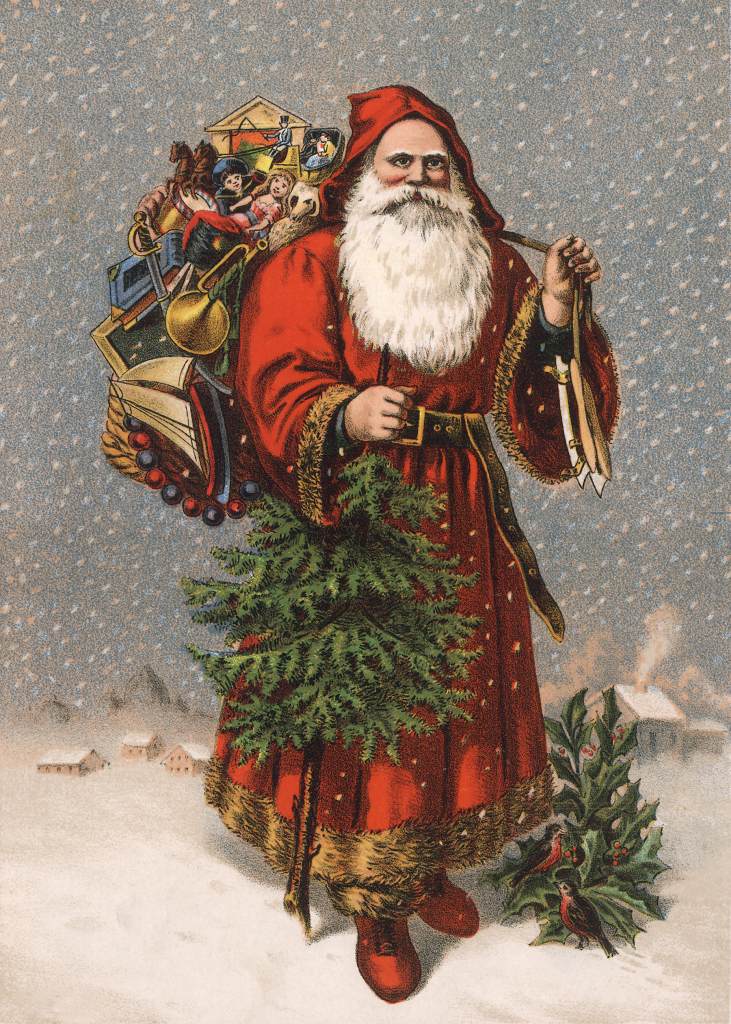
St Nicholas and Old Nick
Saint Nicholas is a legendary figure who supposedly lived during the fourth century. His cult spread quickly and Nicholas became the patron saint of many varied groups, including judges, pawnbrokers, criminals, merchants, sailors, bakers, travelers, the poor and children.
Most religious historians agree that the legend of St. Nicholas was a Christianized version of earlier Pagan gods. Nicholas’ legends were mainly created out of stories about the Teutonic god Hold Nickar, known as Poseidon to the Greeks. This powerful sea god was said to gallop through the sky during the winter solstice, granting boons to his worshippers below.
When the Catholic Church created the character of St. Nicholas, they took his name from “Nickar” and gave him Poseidon’s characteristics. Thousands of churches named in St. Nicholas’ honor were converted from temples to Poseidon and Hold Nickar.
Local traditions were incorporated into the new Christian holidays to make them more acceptable to the new converts. To these early Christians, St. Nicholas became a sort of “super-shaman” who was overlaid upon their own shamanic cultural practices. Many images of St. Nicholas from these early times show him wearing red and white, or standing in front of a red background with white spots, the design of the mushroom.
True spirit of Christmas
By better understanding the truths within these popular celebrations, we can better understand the modern world and our place in it.
Many people today have rejected Christmas as being too commercial, claiming that this ritual of giving is actually a celebration of materialism and greed. Yet the true spirit of this winter festival lies not in the exchange of plastic toys, but in celebrating a gift from the earth: the fruiting top of a magical mushroom, and the revelatory experiences it can provide.

